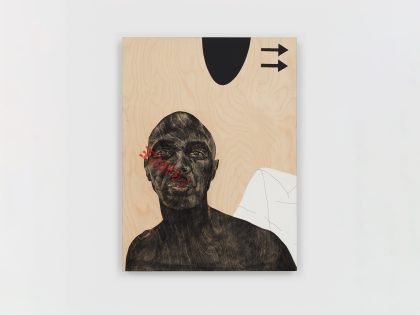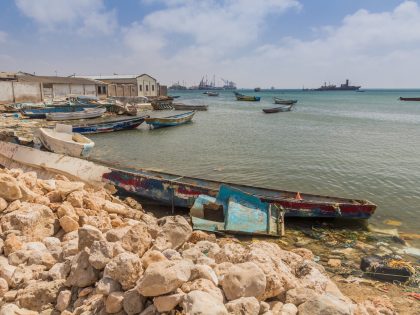When Basquiat went to Africa
In 1988, Basquiat traveled to Cote d'Ivoire, anticipating "very unsophisticated" Africans would see his art. That's not what happened.

Jean-Michel Basquiat in Cote d'Ivoire in 1988.
Jean-Michel Basquiat, the first American artist of African descent to achieve international stardom, often referenced Africa or the African diaspora in his work. Take, for example, 1983′s “The Nile” (a painting that featured nods to Egyptian hieroglyphs, the Nile and the Nuba in Sudan) and “Gold Griot” (1984). So recently when I found a copy of Phoebe Hoban’s biography Basquiat: A Quick Killing in Art — first published in 1998 by Viking — lying around the house, I was curious to read about Basquait’s relationship with the continent. But I also wondered if Basquiat (born in Brooklyn, New York, and the son of a Haitian immigrant father and Puerto Rican mother) ever visited there.
The book, despite its “national bestseller” status and reviews in high-brow, mainstream US media outlets (reviewed here, here and here) focuses on the tawdry details of Basquiat’s life (sex, drugs, and more sex and drugs) and is written in a sensationalist style. Nevertheless, it does gives an adequate account of what the art world in 1980s New York City was like, especially about “the condescension and subtle racism” of Basquiat’s patrons.
But back to my interest. Basquiat, it seems, only traveled to the African continent once: an August 1986 trip for a show the art dealer Bruno Bischofberger had organized at the French Cultural Institute in Abidjan, the capital of Cote d’Ivoire. Hogan spends a few pages describing the visit. “It was Basquiat’s first and last trip to Africa,” writes Hoban. Bischofberger apparently had warned Basquiat (who was accompanied by his girlfriend Jennifer Goode) “… not to be disappointed that there were paved streets and skyscrapers in Abidjan, not just people living in primitive huts.” Writes Hoban:
‘He [Basquait] was hoping that very unsophisticated African people would see his show,’ said Bischofberger. ‘But everyone was invited there by the government, and there were three or four of the most famous artists in the country, and people who had been trained in Paris. It was not the man in the street who got to see Jean-Michel’s work.’
Despite this, Basquiat “enjoyed” meeting local artists–Hoban, for affect, uses the term “indigenous.”
These artists, however, “… turned out to be more influenced by Western art than he had anticipated.” Then writes Hoban,
After the show, the group took a car trip through the countryside, to a tribe (sic) in Korhogo. ‘Jean-Michel was smoking so much pot, I wasn’t sure the chauffeur would be able to stay on the road,’ says Bischofberger. His wife, YiYo, took a lot of pictures. ‘The only thing you saw of black people was their eyes in the evening,’ she recalls.
Later in the book Hoban briefly describes Basquiat’s friendship with an Ivorian artist Outtara [Hoban does not provide a first name] who he had met met on a trip to Paris. They had planned to visit Abidjan, the Ivorian capital, in August 1988. Traveling with Kevin Bray, “a young video director who had befriended Jean-Michel,” they would “… go to Outtara’s village for a ritual cleansing. Outtara had arranged with the local shamans (sic) to perform a ceremony that would cure him of his addiction.”
But a few days later Basquiat was found dead in his apartment. Hoban–prone to drama (and what one reviewer described as her “Hollywood rendition of black culture”)–writes about how Outtara (already in Abidjan) received the news of Basquiat’s death. Some of reads like 19th century anthropology:
Outtara … at first though the news of Jean-Michel Basquiat’s death was a hoax, that Basquiat had staged a cynical ‘publicity stunt.’ When the news registered, he informed the shamans (sic) who who were waiting to cure Basquiat, ‘They did the ceremony for the dead,’ says Outtara. ‘It takes place at night, and involves an animal sacrifice. It’s related to voodoo. They wore masks, and prayed and did mystic dances around the fire all night long.’ As Gerard Basquiat [his father] was claiming his son’s body in the city morque, the African magic men were releasing his spirit in an ancient rite.
Basquiat died in New York City on August 12, 1988.
* This is an edited version of a post that first appeared on Leo Africanus, a previous incarnation of this blog.



















